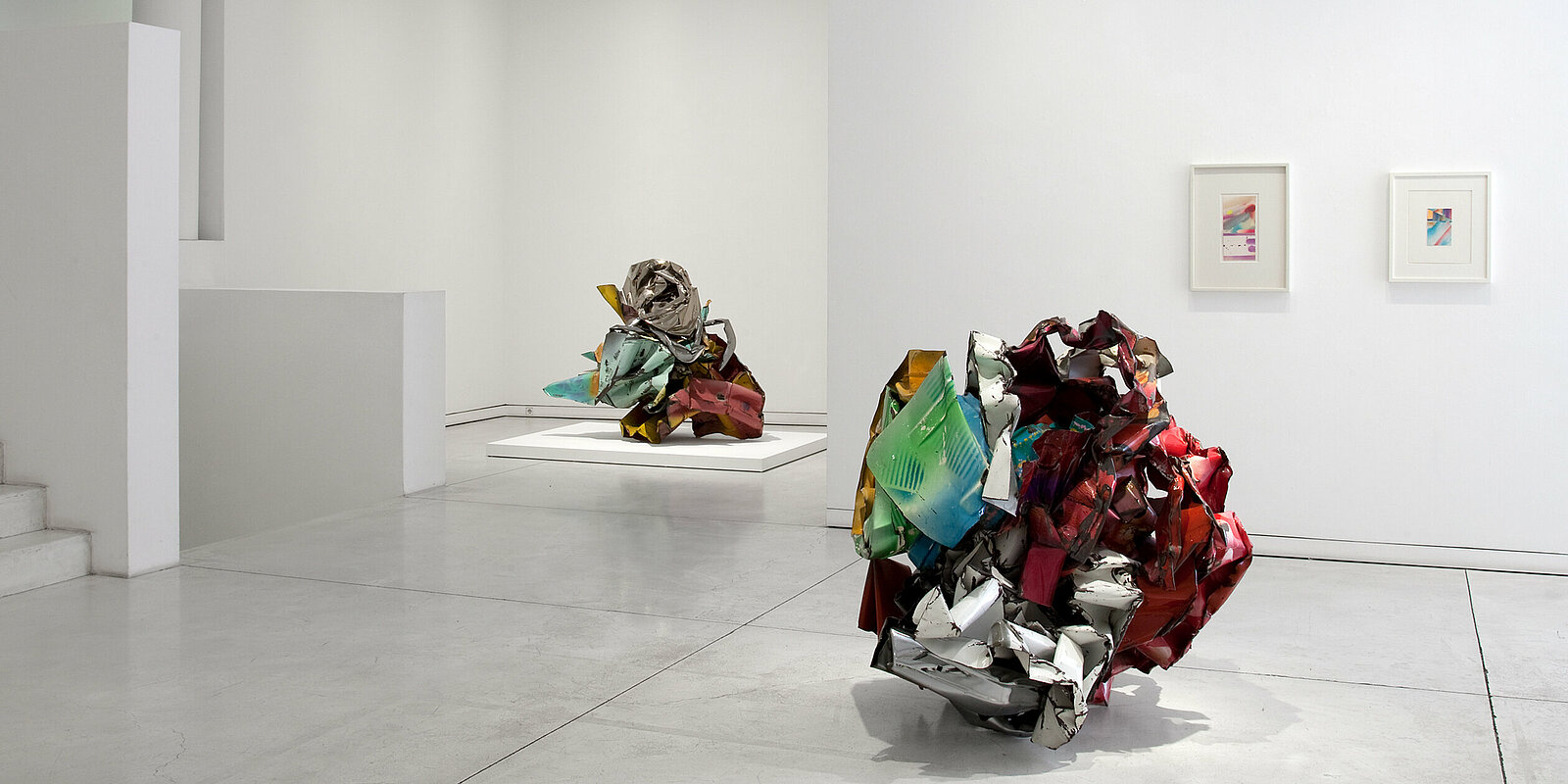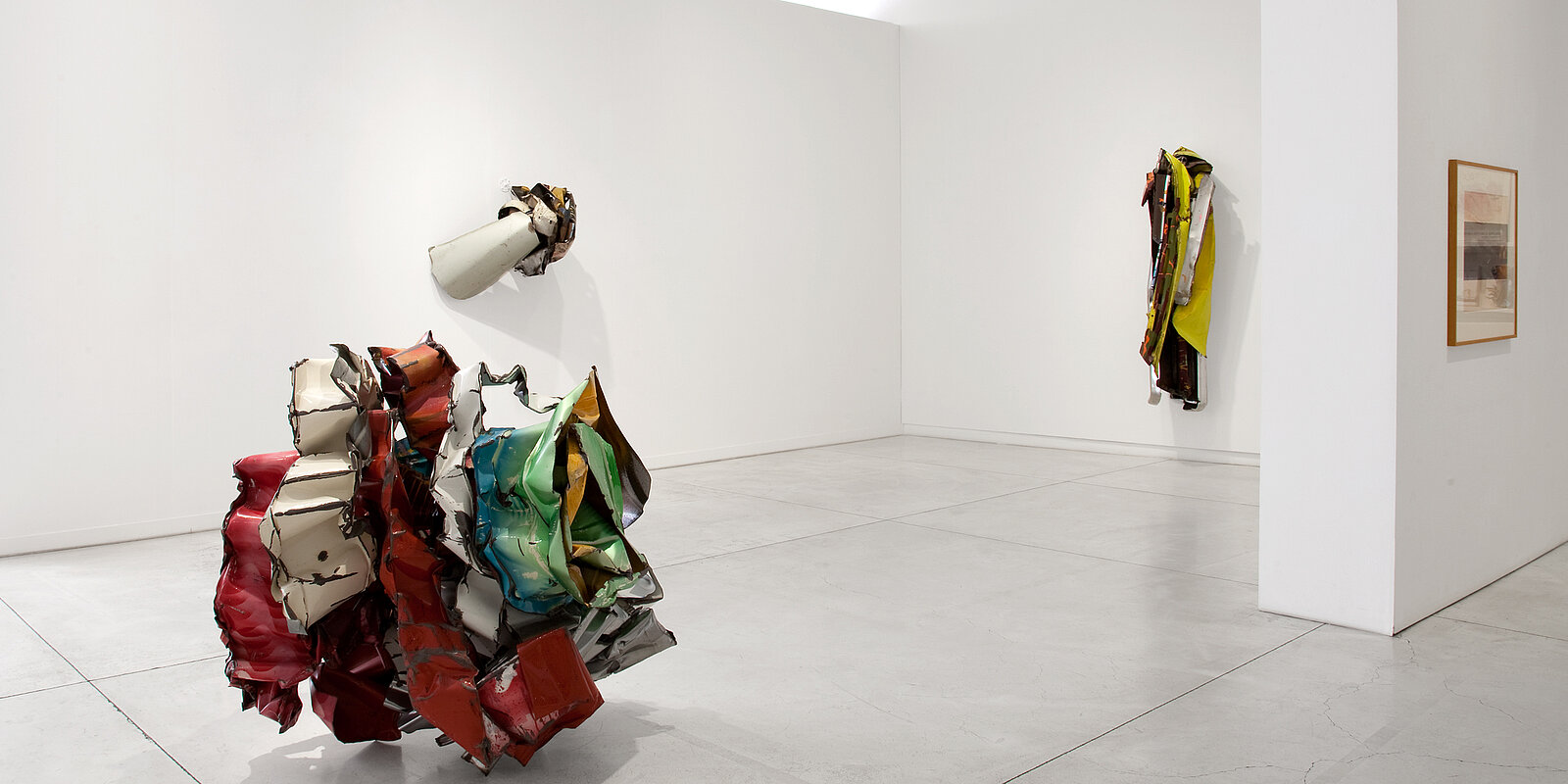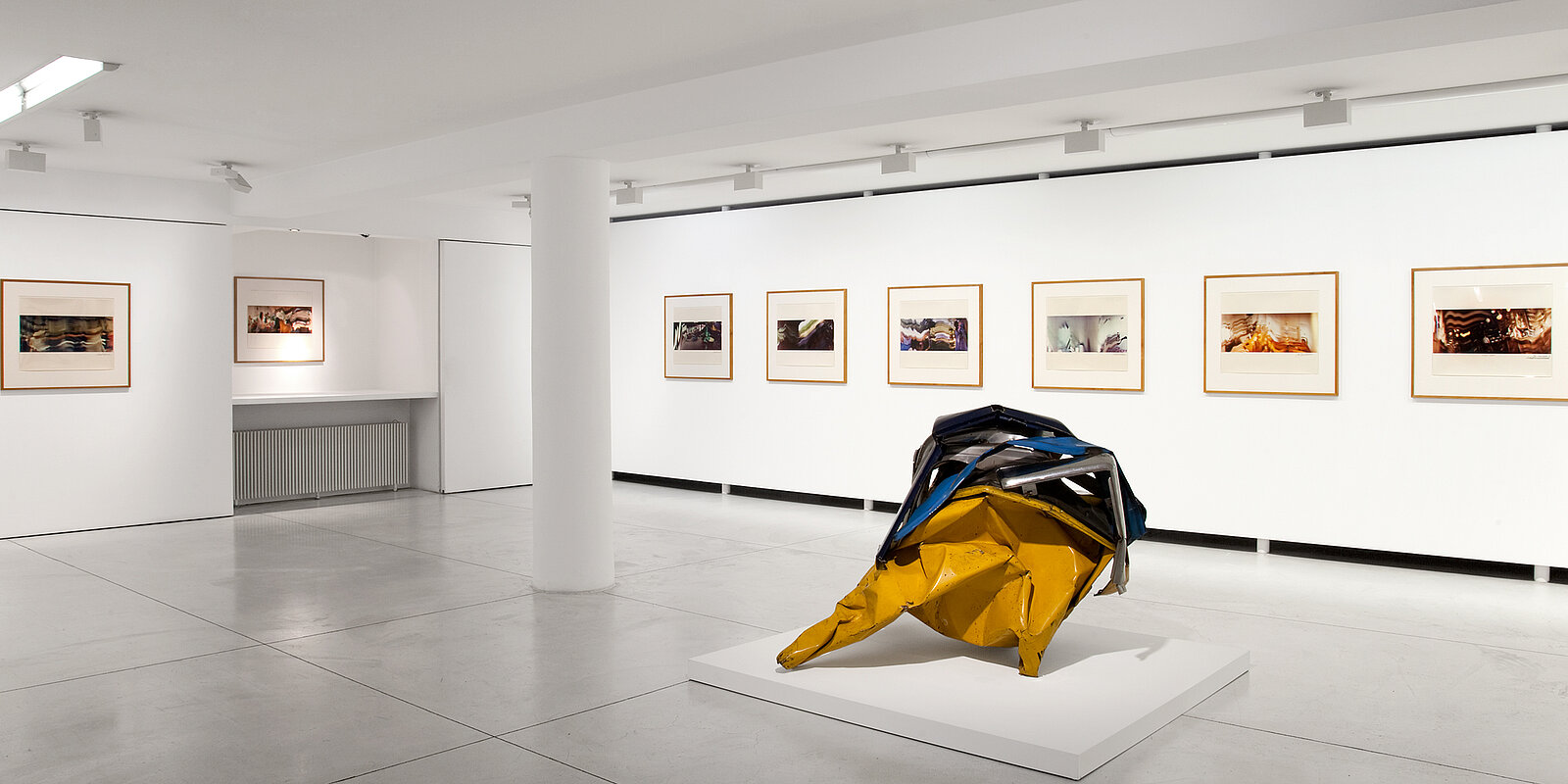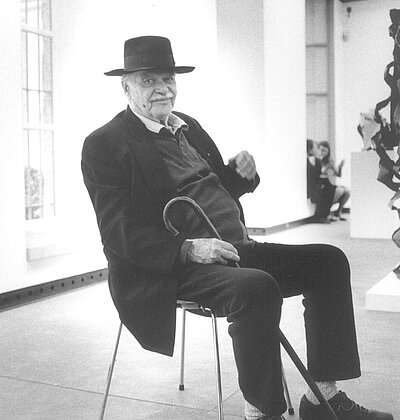John Chamberlain: Sculpture

Galerie Karsten Greve Cologne
Tuesday - Friday 10 am - 6.30 pm
Saturday 10 am - 6 pm
Opening on Saturday, February 25, 2023, 5 - 8 pm
Galerie Karsten Greve is delighted to present JOHN CHAMBERLAIN Sculpture, a new solo exhibition in Cologne, devoted to the work of American artist John Chamberlain (1927 – 2011) – a master of metal‑folding and transformation and an exceptional colorist. The exhibition thus perpetuates the long artistic collaboration between the artist and the gallery owner Karsten Greve, which dates back to the beginning of the 1970s. Featuring a selection of eleven sculptural compositions, in addition to works on paper and photographs, created between 1967 and 2007, – for the most part acquired by Karsten Greve directly from the artist –, the exhibition enshrines John Chamberlain’s most marked forms of expression, exemplifying the developmental trajectory of the artist’s oeuvre and allowing for a truly all-encompassing artistic experience.
The post‑war zeitgeist (spirit of the time) propelled artists to experiment and seek new freedoms, liberating themselves from past dogmas. Abstract Expressionism, a post-World War II art movement in American painting, emerged in New York City in the 1940s. John Chamberlain espoused the movement, in which plastic language was considered self-sufficient through a new relationship to gesture. Quite rapidly he chose his material: steel, which he often scavenged and selected from abandoned cars. He would reshape it endlessly. The medium became an “arena in which to act”, to use Jackson Pollock’s expression. In a way, John Chamberlain managed to seize that new form of pictorial expression and convey it in a sculptural shape – incidentally, it is often said that his sculptures are the counterparts of Willem de Kooning’s canvases, in a certain symbiosis between shape, gesture, and color.
From his first solo exhibition at the Martha Jackson Gallery in 1960, John Chamberlain seduced a large number of collectors and artists (Robert Rauschenberg, Donald Judd, Andy Warhol) with his perception of matter. Papagayo (1967), one of the artist’s largest galvanized‑steel sculptures, once owned by Andy Warhol, was subsequently exhibited at the Guggenheim Museum, New York, in 1971 on the occasion of the first retrospective for John Chamberlain. Papagayo, one of the highlights of the gallery’s exhibition, is a characteristic piece of John Chamberlain’s work in the second half of the 1960s. At the time he was experimenting by briefly choosing to forgo color and give free reign to the shadows and lights on the surface of the metal in a minimalist bent. That interlude accentuated the density of the metal that became so malleable in the hands of the artist.
John Chamberlain proclaimed himself a three‑dimensional collage artist, because he assembled the most varied parts in a new structure (while preserving the initial properties of the medium). That was the case with Double Hooded Jim (1974) and Silver Plait (1976), which distinguish themselves by the assemblage of several parts that come to form one single entity. His sculptures shine with an inherent poetry on the sole basis of their shapes, demonstrating the importance of Chamberlain’s artistic choice in assembling and balancing the parts: “Some seem to think that I work with found pieces, but I don’t. They’re chosen, you see. The idea is that there has been a lot of magic implied in the choice." The idea of assemblage is central both to his working of metal and to his pictorial exercises. The series of works on paper View from the Cockpit (1976) shines with the intensity and pureness of the colors projected in a graphic whole – a nod to Robert Delaunay’s orphism. His rarely exhibited monotypes date back to the middle of the 1980s and showcase yet another different exercise, which could be sculpture not in volume, but on a two‑dimensional support to which he applied color through collage and assemblage.
A series of photographs will also be displayed on the occasion of theexhibition in Cologne, completing the overview of the various aspects of the artist’s work. In 1977, John Chamberlain started experimenting with a Widelux panoramic camera. He captured wide-angle formats while spatially maneuvering the camera with vigorous manual movements during the gradual exposure period. It allowed him to capture a series of successive instants within a single frame, resulting in images depicting spaces in wild motion, by conflating outlines, structures, colors, and light into weightless forms, celebrating the unexpected outcome.
Born in 1927 in Rochester, Indiana, John Chamberlain attended Black Mountain College, North Carolina, in the mid-1950s, a space where a vivacious exchange among his artist and poet contemporaries of the likes of Charles Olson, Robert Creeley and Robert Duncan, was to profoundly impact his successive career. By the early 1960s Chamberlain’s work had already found its ways into a number of significant collections; in 1961 it was exhibited at the São Paulo Biennale, in 1964 at the Venice Biennale. In 1971 both the Guggenheim Museum in New York City and the Museum of Contemporary Art in Los Angeles dedicated major retrospectives to him, followed by prominent shows at the Kunsthalle Baden-Baden (1991) and the Stedelijk Museum Amsterdam (1996). Over the course of his creative period, he had studios in New York, Florida and finally Shelter Island, New York, where he worked until his passing in 2011.


